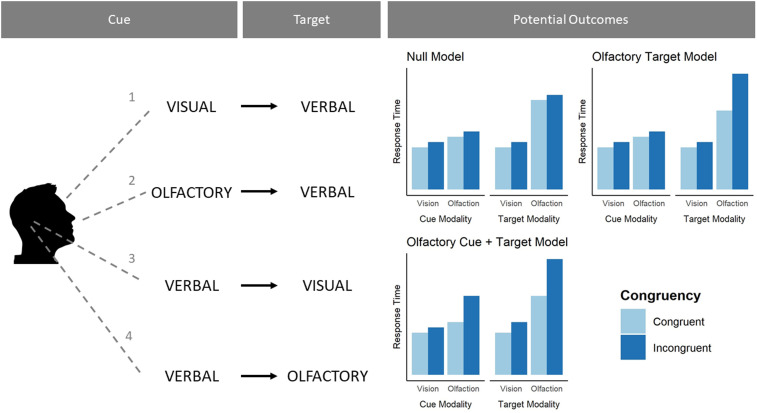Figure 2.
Experimental design with information for the conditions of Experiment 2. Left column, During each trial, participants would either see (1), smell (2), or hear (3, 4) one of four cues. Middle column, After a short pause, participants' would either hear (1, 2), see (3) or smell (4) a target stimulus that either matched or did not match the cue. Verbal targets always came after visual or olfactory cues, and verbal cues always preceded either olfactory or visual targets. Right column, Because we tested all stimuli as both cues and targets, this allowed us to systematically compare how olfactory, visual, and verbal cues and targets are related to response time. Right column, Three competing models regarding how olfaction might use and generate predictions (we hypothesized the “olfactory target model”). All models assume incongruent trials are overall somewhat slower than congruent trials.

